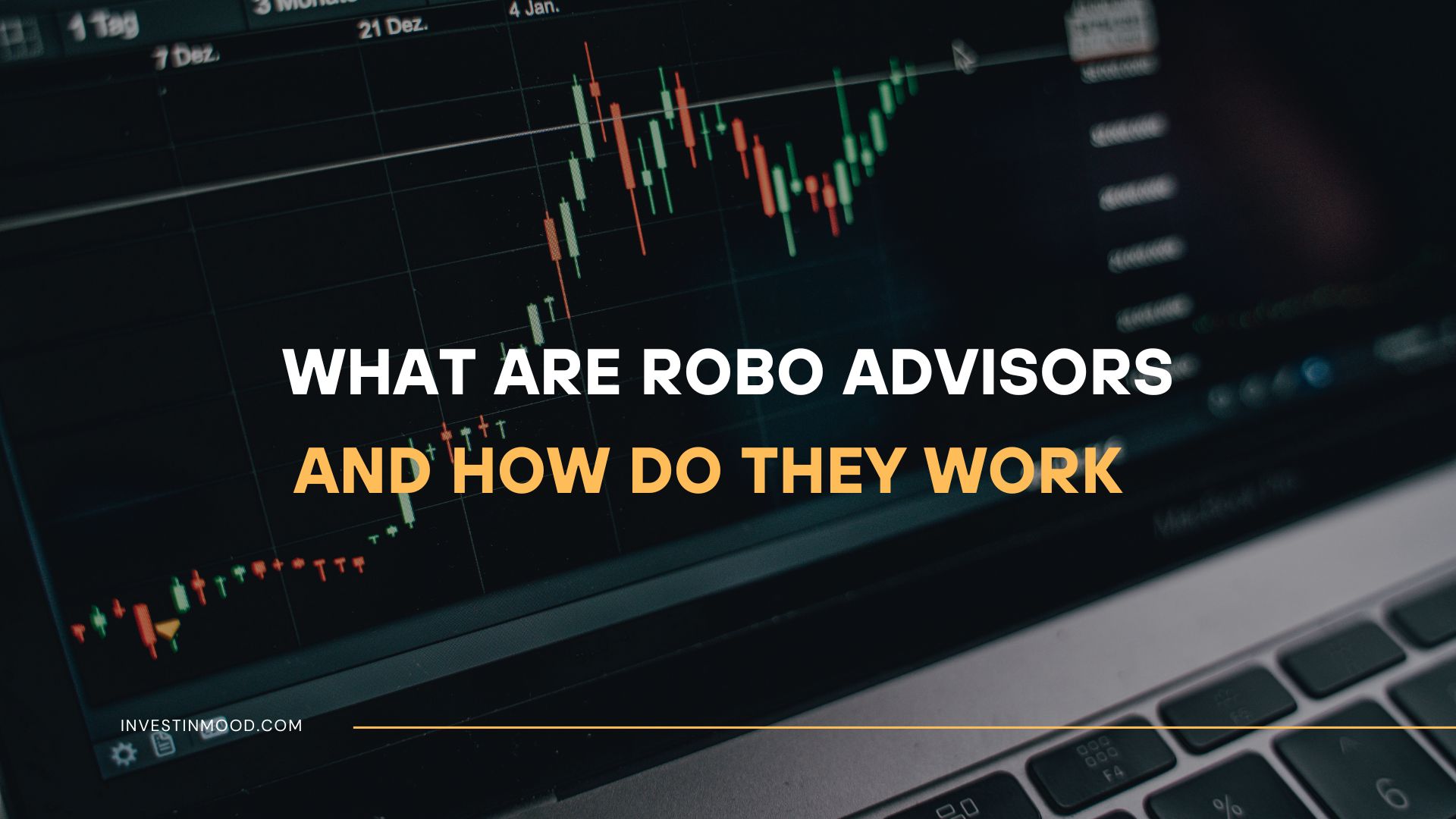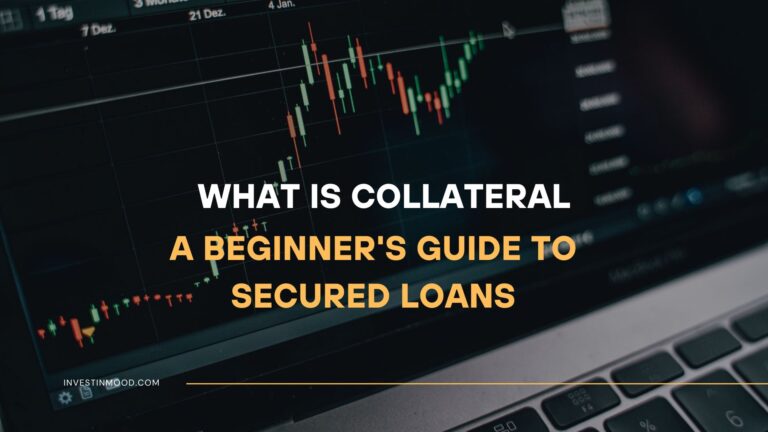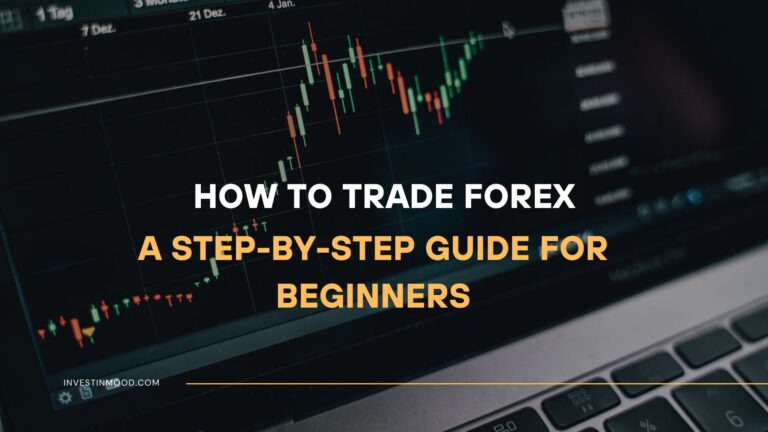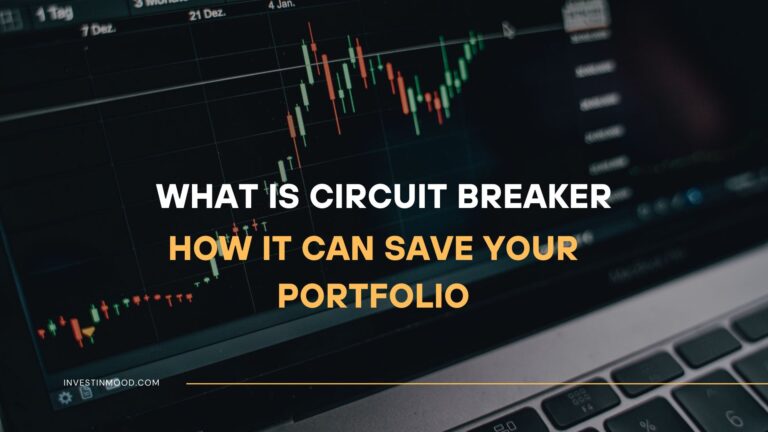
What Are Robo Advisors and How Do They Work
Robo Advisors are automated investment platforms that build and manage a diversified portfolio for you using complex algorithms. For investors in the US, UK, Canada, and Australia seeking a low-cost, hands-off approach to growing their wealth, these digital platforms have democratized access to sophisticated portfolio management.
For investors in the US, UK, Canada, and Australia, Robo Advisors from providers like Betterment and Wealthfront have become a cornerstone of modern, passive investing strategies, offering automated rebalancing and tax-loss harvesting directly from a smartphone.
Summary Table
| Aspect | Detail |
|---|---|
| Definition | A digital platform that provides automated, algorithm-driven financial planning and investment services with minimal human supervision. |
| Also Known As | Digital Advisors, Automated Investing Platforms |
| Main Used In | Portfolio Management, Retirement Planning, Passive Investing |
| Key Takeaway | They offer a low-cost, accessible entry point into investing but lack the personalized touch of a human financial advisor. |
| Formula | N/A |
| Related Concepts |
What is a Robo Advisor
A Robo Advisor is a fintech platform that automates investment management. Think of it as a financial autopilot. You answer a series of questions about your financial goals, time horizon, and risk tolerance. The algorithm then uses this information to construct a globally diversified portfolio, typically composed of low-cost Exchange-Traded Funds (ETFs). It then handles all the ongoing work: executing trades, reinvesting dividends, and rebalancing the portfolio back to its target allocation when market movements cause it to drift. This entire process is designed to remove human emotion and bias from investing, providing a disciplined, systematic approach.
Key Takeaways
- Automated & Accessible: They lower the barrier to entry for professional portfolio management, often requiring low or no account minimums.
- Cost-Effective: Management fees are significantly lower than those of traditional human financial advisors.
- Diversification is Key: Robo Advisors build portfolios primarily with ETFs, providing instant diversification across thousands of securities.
- Set-and-Forget: The platform handles all daily management, including automatic rebalancing and, in some cases, tax-loss harvesting.
- Limited Personalization: While efficient, they are less suited for complex financial situations requiring bespoke advice, like estate planning or stock-picking.
<<<<<<<<<<<<<AD-PLACEMENT>>>>>>>>>>>>>>>>>
Key Takeaways
The Core Concept Explained
The core mechanic of a Robo Advisor is Modern Portfolio Theory (MPT). MPT, for which Harry Markowitz won a Nobel Prize, argues that an “optimal portfolio” offers the highest possible expected return for a given level of risk. Robo Advisors operationalize this theory. They use algorithms to determine the ideal mix of asset classes (stocks, bonds, real estate, etc.) for your specific risk profile. A young investor with a high-risk tolerance and a long time horizon will be placed in a stock-heavy portfolio. In contrast, someone nearing retirement will have a more conservative, bond-heavy allocation. The platform’s ongoing value comes from automated rebalancing. If your stock ETFs perform well and grow to become 85% of your portfolio when your target is 80%, the Robo Advisor will automatically sell some stocks and buy bonds to return to your target allocation, enforcing a “buy low, sell high” discipline.
Visual Aid Suggestion 1: An infographic showing the user journey: 1. User takes a risk assessment quiz on a smartphone screen. 2. The algorithm processes the data. 3. A pie chart appears showing a diversified portfolio of US Stocks, International Stocks, and Bonds. 4. A timeline shows the portfolio growing over time with icons for “Automatic Rebalancing” and “Dividend Reinvestment.”
How Does a Robo Advisor Work?
While there’s no single formula, the operational process of a Robo Advisor is standardized and follows a clear, step-by-step framework that defines its functionality.
The Step-by-Step Process
- Onboarding & Risk Assessment: You sign up and complete a detailed questionnaire. Questions typically cover your age, income, investment goals (e.g., retirement, down payment), time horizon, and, crucially, your comfort level with potential portfolio losses.
- Portfolio Construction: The algorithm uses your answers to recommend a pre-built, diversified portfolio model. These portfolios are composed of various ETFs that track broad market indices like the S&P 500 (US), FTSE 100 (UK), or a global bond index.
- Funding the Account: You link your bank account and transfer funds. Many platforms in the US, like Betterment, have no minimums, while others, like Vanguard Digital Advisor, may require an initial investment like $3,000.
- Automated Management: This is the continuous phase:
- Trading & Execution: Your funds are automatically invested according to your portfolio model.
- Dividend Reinvestment: Any dividends paid by the underlying ETFs are automatically used to purchase more shares.
- Rebalancing: The platform continuously monitors your portfolio and automatically buys and sells assets to maintain your target asset allocation.
- Reporting & Monitoring: You receive regular statements and can monitor your portfolio’s performance 24/7 through a user-friendly dashboard on the web or a mobile app.
For example, an investor in the UK might use a platform like Nutmeg. They would fund their account in British Pounds (GBP), and the algorithm would construct a portfolio using ETFs listed on the London Stock Exchange (LSE) and other global exchanges, tailored to their specific risk profile and goals.
<<<<<<<<<<<<<AD-PLACEMENT>>>>>>>>>>>>>>>>>
Why Robo Advisors Matter to Traders and Investors
Robo Advisors have fundamentally reshaped the personal investing landscape by making sophisticated investment strategies accessible to the masses.
- For New Investors: They eliminate the intimidation factor of investing. You don’t need to know how to pick stocks or build a portfolio. The Robo Advisor handles the complex work, allowing you to start building wealth immediately.
- For Cost-Conscious Investors: Traditional financial advisors often charge 1% or more of assets under management (AUM). Robo Advisors typically charge between 0.25% and 0.50%, a significant saving that compounds over time. According to the SEC, even a 1% difference in fees can cost you hundreds of thousands of dollars over a lifetime of investing.
- For Behavioral Finance: They enforce discipline. By automating the process, they prevent investors from making emotionally-driven mistakes, like panic-selling during a market crash or chasing “hot” stocks at their peak.
<<<<<<<<<<<<<AD-PLACEMENT>>>>>>>>>>>>>>>>>
How to Use a Robo Advisor in Your Financial Strategy
Robo Advisors are versatile tools suitable for various financial goals.
Use Cases:
- Case 1: Building a Retirement Nest Egg (e.g., IRA in the US, ISA in the UK): A Robo Advisor is an ideal “set-it-and-forget-it” vehicle for long-term retirement savings. You can set up recurring monthly deposits, and the platform will manage the growth of your tax-advantaged account for decades.
- Case 2: Saving for a Short-Term Goal: Saving for a down payment on a house in 5 years? You can use a Robo Advisor with a conservative portfolio to get a better return than a savings account, with managed risk appropriate for your time horizon.
- Case 3: A Core Satellite Strategy: Sophisticated investors can use a Robo Advisor for their core, diversified portfolio (the “core”) while using a separate brokerage account to actively pick individual stocks or ETFs (the “satellites”). This provides a stable foundation while allowing for more speculative plays.
To start investing with a Robo Advisor, you’ll need to choose a reputable platform that aligns with your goals. We’ve reviewed and compared the top providers to help you make an informed decision.
Advanced Robo Advisor Features to Look For
Beyond basic portfolio management, top-tier Robo Advisors offer features that can significantly enhance returns, especially for investors in high tax brackets.
- Direct Indexing: Instead of just using ETFs, some platforms can buy the individual stocks that make up an index (like the S&P 500). This allows for more precise and larger-scale tax-loss harvesting at the individual stock level, potentially boosting after-tax returns.
- Socially Responsible Investing (SRI) / ESG Portfolios: Many platforms now offer portfolio options that exclude industries like fossil fuels or firearms and prioritize companies with strong environmental, social, and governance (ESG) practices.
- Smart Beta Strategies: Some providers offer portfolios that tilt away from traditional market-cap weighting towards factors like “value” or “low volatility,” aiming to capture higher risk-adjusted returns.
- Cash Management & High-Yield Savings: Integrated accounts that automatically sweep uninvested cash into high-yield savings or government money market funds, ensuring all your capital is working for you.
- Low Cost & Minimums Makes professional management accessible to almost everyone.
- Convenience & Ease The entire process is digital, user-friendly, and requires minimal effort.
- Automation & Discipline Eliminates emotional decision-making and ensures consistent portfolio rebalancing.
- Strong Diversification Built on Modern Portfolio Theory using low-cost ETFs.
- Tax Efficiency Many offer automated tax-loss harvesting to optimize after-tax returns.
- Limited Personalization Cannot handle complex estate planning or highly specific ethical investing needs.
- Over-Simplification The risk questionnaire may not capture all nuances of your financial life.
- Lack of Human Guidance No dedicated advisor for reassurance during market crashes or complex life events.
- Generic Portfolios Portfolio options are often similar and may not capture niche opportunities.
- One-Size-Fits-All Approach Less effective for investors with unique circumstances or high net worth.
The Hybrid Model: The Best of Both Worlds?
For those who want automation but also crave human reassurance, the Hybrid Robo Advisor is a compelling solution. Platforms like Vanguard Personal Advisor Services and Schwab Intelligent Portfolios Premium offer this. You still get an algorithmically managed portfolio, but you also have access to a dedicated or on-call team of Certified Financial Planners (CFPs). You can consult with them for major life events, complex tax questions, or to validate your overall financial plan. This model bridges the gap between the cold efficiency of a pure Robo and the high cost of a full-service advisor, typically for a fee between 0.30% and 0.60%.
Robo Advisors in the Real World
The COVID-19 market crash of March 2020 provides a perfect case study for Robo Advisor performance and value. As the S&P 500 plummeted over 30% in a matter of weeks, human investors were faced with extreme fear and uncertainty. Many were tempted to sell their holdings to “stop the losses,” a classic behavioral mistake that locks in losses.
During this period, Robo Advisors operated exactly as programmed. For clients with a long-term horizon, the algorithms continued to rebalance portfolios. This meant they were automatically buying more stocks as prices fell to maintain the target asset allocation. This enforced a disciplined “buy low” strategy when human psychology was screaming “sell!”
A report by Backend Benchmarking analyzed the performance of major Robo Advisors during this volatile period. They found that while all platforms saw declines, their disciplined, diversified approach generally protected investors from the worst of the volatility compared to undiversified portfolios. Furthermore, their automatic rebalancing positioned them for a strong recovery when markets rebounded sharply in the following months. This event demonstrated the core value proposition of Robo Advisors: removing emotion and maintaining a long-term strategy during periods of extreme market stress.
This disciplined approach during crises, like the one seen on the NASDAQ and other global exchanges, highlights why automated investing has gained such traction among retail investors in the US and other Tier-1 countries.
Conclusion
Ultimately, Robo Advisors have democratized investing, providing a powerful, low-cost tool for building long-term wealth through disciplined, diversified portfolio management. While they are not a substitute for human wisdom in complex financial planning scenarios, their advantages in cost, convenience, and behavioral discipline are undeniable. By incorporating a Robo Advisor into your overall financial strategy—whether as your core investment account or as part of a broader plan—you can harness the power of sophisticated algorithms to work toward your financial goals. Start by exploring a few top-rated platforms to see which user interface and fee structure feels right for you.
Ready to put these concepts into action? The right platform is essential. We’ve meticulously reviewed and ranked the best Robo Advisors to help you get started.
<<<<<<<<<<<<<AD-PLACEMENT>>>>>>>>>>>>>>>>>
How Robo Advisors Relate to Other Concepts
A key distinction is between a Robo Advisor and a traditional financial advisor or a self-directed brokerage account.
| Feature | Robo Advisor | Traditional Financial Advisor |
|---|---|---|
| What it provides | Automated, algorithm-based portfolio management. | Personalized, holistic financial advice and planning. |
| Cost | Low (0.25% – 0.50% AUM) | High (1%+ AUM or commissions) |
| Best For | Hands-off, cost-conscious investors. | High-net-worth individuals with complex needs. |
| Personalization | Limited to pre-built portfolio models. | High (estate planning, tax strategy, etc.) |
Related Terms
- Modern Portfolio Theory (MPT): The foundational academic theory behind the diversification and asset allocation used by Robo Advisors.
- Exchange-Traded Fund (ETF): The primary building block of most Robo Advisor portfolios.
- Asset Allocation: The strategic distribution of investments across different asset classes, which is the primary output of a Robo Advisor’s algorithm.
- Tax-Loss Harvesting: An advanced feature of some Robo Advisors that sells losing positions to offset taxes on gains and income.
Frequently Asked Questions About Robo Advisors
Recommended Resources
- U.S. Securities and Exchange Commission (SEC) – Investor Bulletin on Robo Advisors – For authoritative, regulatory information.
- Investopedia – Robo Advisor Definition – For a foundational explanation and further reading.
13. Metadata Elements
- Post Excerpt:
- SEO Description: (160 chars)
- Article Tags: Robo Advisor, Automated Investing, Digital Advisor, Portfolio Management, ETFs, Passive Investing, Financial Technology, Personal Finance, Investment Strategy
- Keywords: robo advisor, automated investing, digital advisor, portfolio management, ETFs, passive investing, financial technology, algorithm, asset allocation, diversification, rebalancing, modern portfolio theory, MPT, investment fees, hybrid robo advisor, tax-loss harvesting.
- Title Suggestions:
- Robo Advisors: What Are They and How Do They Work?
- Are Robo Advisors Worth It? A Look at the Pros and Cons.
- How to Use a Robo Advisor to Automate Your Investing.
- Robo Advisors vs. Human Advisors: Which Is Right for You?
- A Beginner’s Guide to Automated Investing with Robo Advisors.
14. Visual Aid
- Section 3: Infographic of the User Journey. (Description provided in Section 3).
- Section 5: Chart comparing long-term growth. A line chart showing the growth of a $10,000 investment in a Robo Advisor portfolio vs. a traditional savings account over 20 years, highlighting the power of compound growth and market returns.
- Section 8: Two-panel image during a market crash. (Description provided in Section 8).
- Section 9: Venn Diagram of “Hybrid Advice”. A three-circle Venn diagram. Circle 1: “Human Guidance.” Circle 2: “Automated Management.” Circle 3: “Low Cost.” The overlapping center, labeled “Hybrid Robo Advisor,” shows the ideal blend of all three features.
15. Summary Paragraph
Robo Advisors are automated digital platforms that provide accessible, low-cost investment management by using algorithms to build and maintain diversified portfolios of ETFs based on an individual’s risk profile and goals. They excel at providing disciplined, emotion-free investing through features like automatic rebalancing and are ideal for investors seeking a hands-off approach to building long-term wealth, though they may lack the personalization required for highly complex financial situations.





